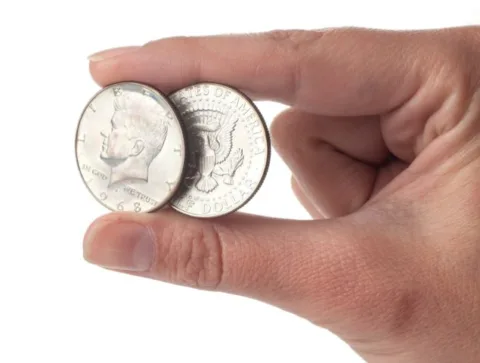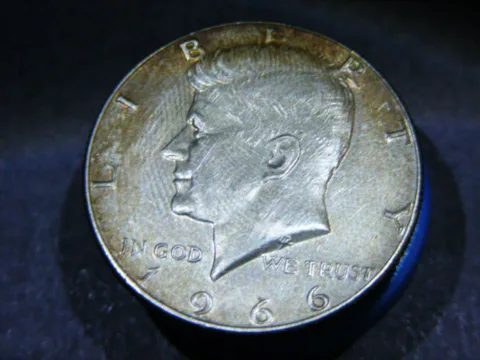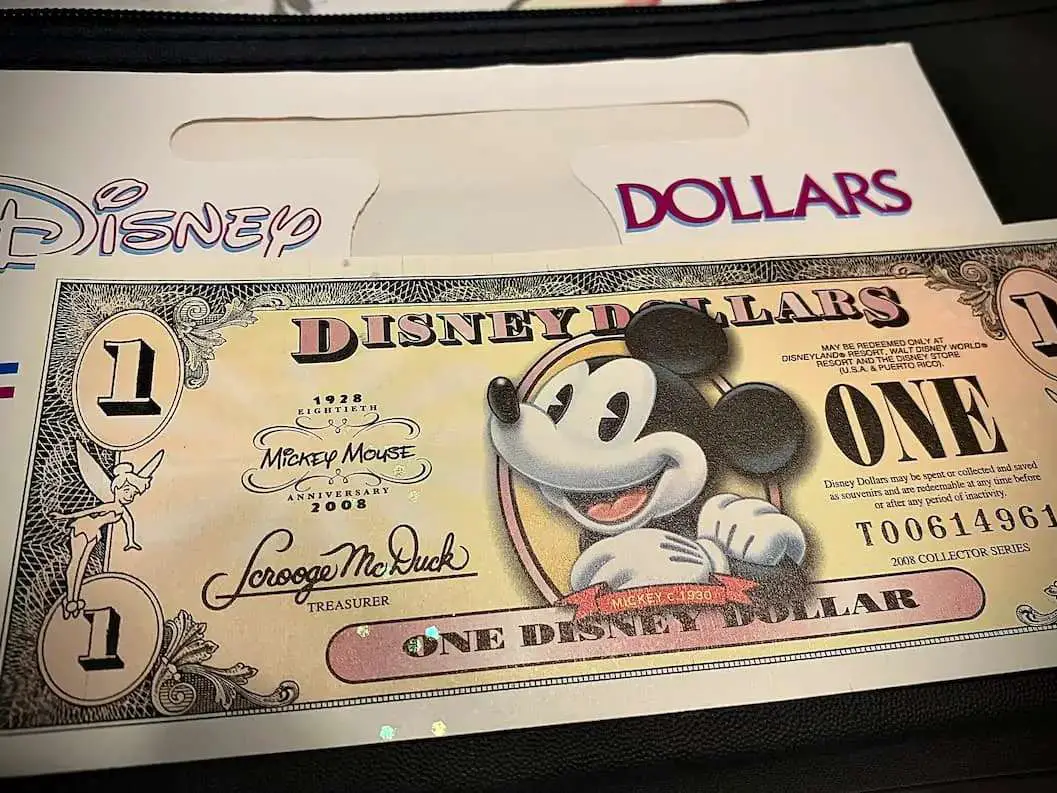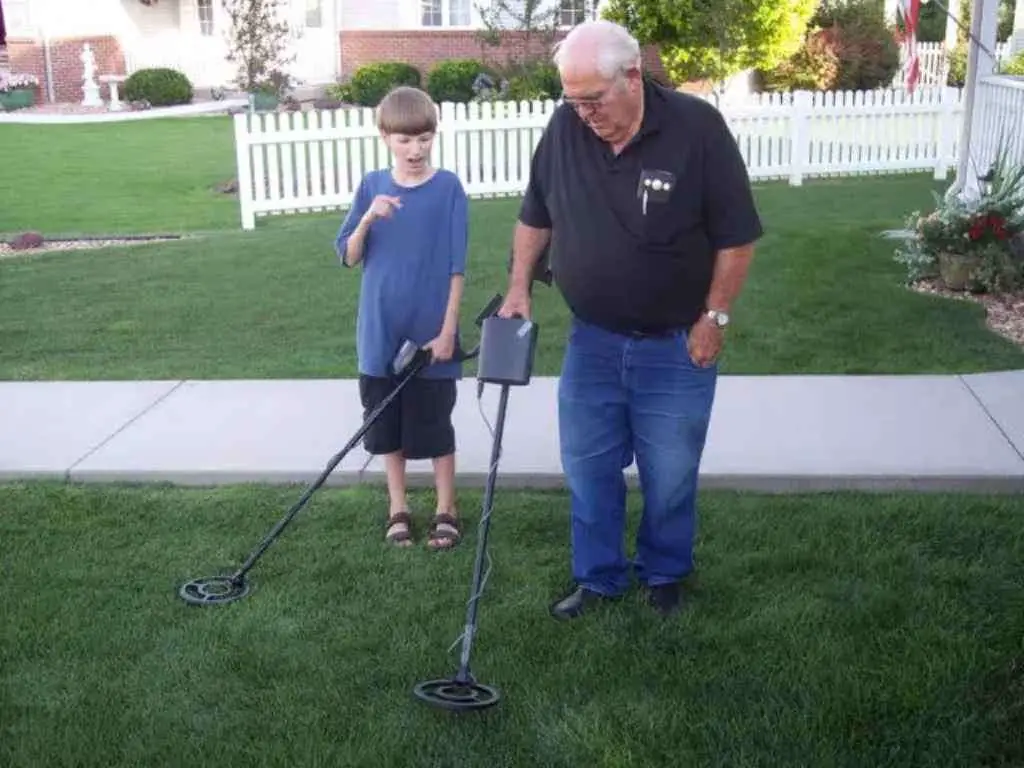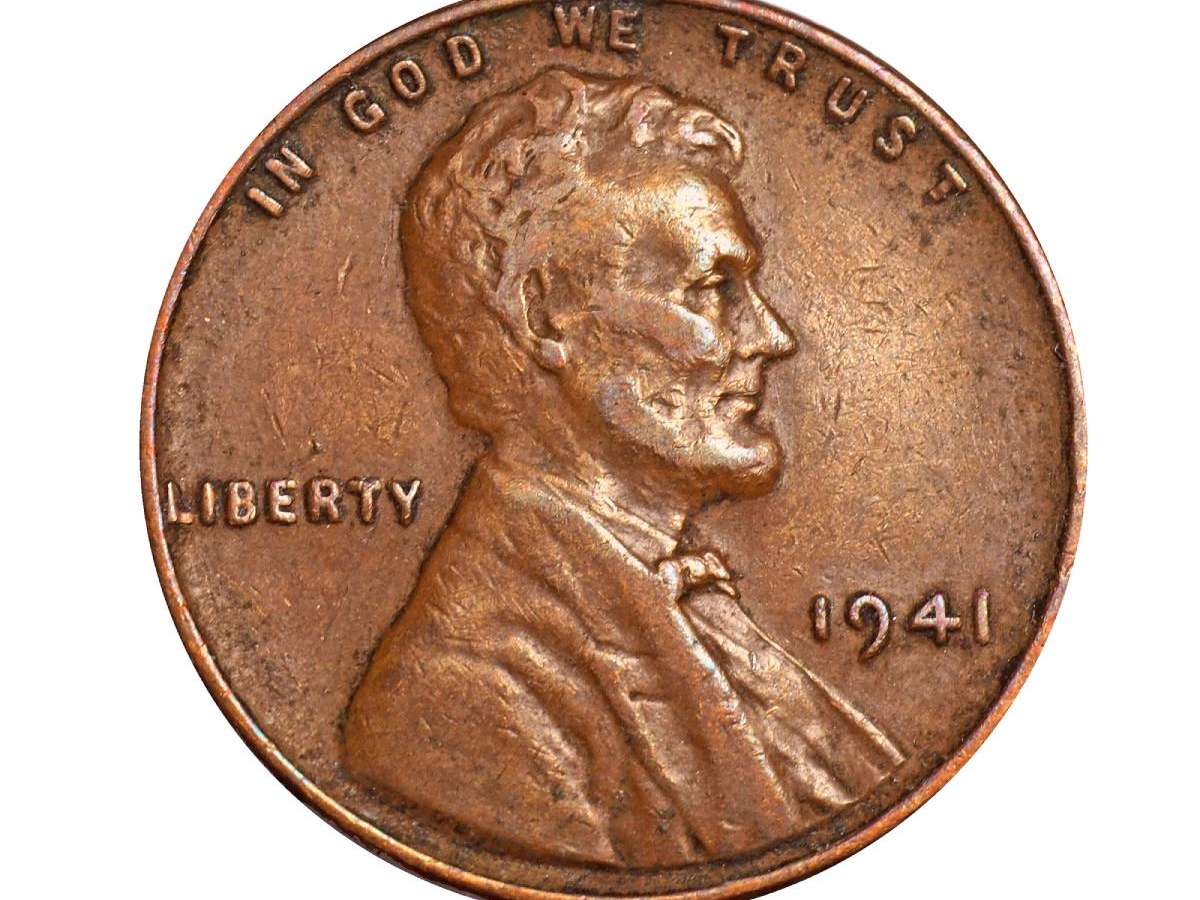One of the most popular coins to collect during the 20th century features one of the most popular presidents of the 20th century.
Kennedy half dollars, which have been in circulation since 1964, honor John F. Kennedy – our nation’s 35th president, who served from 1961 until he was assassinated in 1963.
The United States government swiftly approved the Kennedy half dollar mere weeks after Kennedy was killed — making for what was one of the most sudden changes in United States coinage history.
The Kennedy half dollar replaced the Franklin half dollar — which was struck from 1948 to 1963.
Below, you will see how much Kennedy half dollars are worth (including the Bicentennial half dollar), and which ones are considered rare Kennedy Half dollars…
The Most Common Kennedy Half Dollars
Kennedy half dollars, though not seen in circulation much anymore, are actually very common coins.
Before Kennedy half dollars were made in 1964, half dollars in general circulated quite well.
However, a mourning nation wanting these souvenirs of the fallen president quickly put in place a national habit of withholding half dollars from circulation.
Couple that effect with the overall zeal to keep all silver coins from circulation during the mid 1960s, when people hoarded coins which contained any trace of silver, and you can easily see how half dollars in circulation became a thing of the past.
The United States Mint made 100s of millions of Kennedy half dollars. Production remained high overall through much of the 1970s. By the time the 1980s entered, half dollar use had essentially stopped across much of the country — and the numbers of Kennedy half dollars being made declined.
The last year more than 60 million half dollars were made for circulation was 1983.
The last time Kennedy half dollar mintage in any single year was in the 100s of millions was in the mid 1970s.
If you look for half dollars, the dates you’ll most often find are from:
- 1971
- 1972
- 1974
- 1776-1976 (the Bicentennial half dollar)
After that, you’ll likely find some sporadic dates ranging from the late 1970s and early 1980s — followed by a variety of dates from the 1970s, 1980s, and 1990s.
Relatively few Kennedy half dollars made in the 2000s have really ever reached circulation. Most dates from the mid 1980s and on have very light (if any) perceptible wear — because they are used so infrequently.
Are Silver Kennedy Half Dollars Hard To Find?
If you look for Kennedy half dollars at banks, there’s actually a slim chance you’ll wind up finding silver half dollars.
Because half dollars don’t circulate very much and most people don’t even think to ask for them in change or, for that matter, spend much time looking at half dollars — silver half dollars do turn up on occasion in bank rolls.
Be sure you check coin rolls of half dollars whenever you can. With a bit of searching, you stand a chance of finding a 40% silver Kennedy half dollar (made from 1965 through 1969 for circulation) or even a 90% silver 1964 Kennedy half dollar.
Here’s when Kennedy silver half dollars were made:
- 1964 was the only year Kennedy half dollars were struck in the 90% silver format.
- From 1965 through 1970, Kennedy half dollars were made of a 40% silver composition. (By the way, 1970 Kennedy half dollars were made only for mint sets, though some have entered circulation.)
- Beginning in 1971, Kennedy half dollars made for circulation were struck in a copper-nickel clad composition.
- Some 1776-1976 Kennedy half dollars were made in a 40% silver composition for coin collectors – these are found in mint sets and proof sets.
- 90% silver proof Kennedy half dollars have been made since 1992 for inclusion in certain proof sets.
Are There Any Rare Kennedy Half Dollars?
There are really no rare regular-strike Kennedy half dollars.
Values for most Kennedy half dollars are cheap — except for the prices of a couple scarce coins and error coins, of which there are many:
- The 1970-D Kennedy half dollar is the scarcest, worth about $20 in typical uncirculated grades.
- The 1998-S silver matte finish Kennedy half dollar is worth $500.
- All circulated copper-nickel clad half dollars without any errors are worth only face value.
- Most proof Kennedy half dollars are valued between $3 and $10.
- Regular, uncirculated 1964 Kennedy half dollars are worth around $8.
- Regular uncirculated 1965 through 1969 Kennedy half dollars have a value of around $5.
- All worn silver Kennedy half dollars are worth right about whatever the current melt value is for the respective amount of silver.
What’s The Value Of A 1776 To 1976 Bicentennial Half Dollar?
If you’ve found a Bicentennial half dollar in your change, you’re probably wondering what the 1776-1976 half dollar value is — and whether or not these old half dollars are rare.
Amazingly, more than a half a billion (that’s with a B!) 1976 Bicentennial half dollars were made. So, in a nutshell, no – the Bicentennial ones aren’t rare Kennedy half dollars by any stretch of the imagination.
A well-worn bicentennial Kennedy half dollar made from copper-nickel clad and bearing either no mintmark under Kennedy’s head or a “D” mintmark (for Denver) is worth face value — or 50 cents.
The “S” mintmark Kennedy half dollars (made at the San Francisco Mint) may be worth significantly more — because some 1976-S Kennedy half dollars are made from copper-nickel clad and others are made from a 40% silver composition.
To tell the difference, you’ll need to look at the side of your Bicentennial half dollars. If you see an orange or brown band along the edge, it’s made from copper. If the edge appears silver or has only a slight tan tone, it’s more likely a silver half dollar.
You can also tell the difference between copper-nickel and 40% silver Bicentennial half dollars by weighing them:
- A clad Bicentennial half dollar weighs about 11.34 grams.
- A 40% silver 1976 half dollar weighs 11.5 grams.
If you have a copper-nickel clad 1976-S Bicentennial half dollar, it’s probably a collectible proof coin and is worth about $1.
Have the silver 1976-S Kennedy half dollar? Then it’s worth $3 to $5.
I’m the Coin Editor here at TheFunTimesGuide. My love for coins began when I was 11 years old. I primarily collect and study U.S. coins produced during the 20th century.
I’m a member of the American Numismatic Association (ANA) and the Numismatic Literary Guild (NLG) and have won multiple awards from the NLG for my work as a coin journalist. I’m also the editor at the Florida United Numismatists Club (FUN Topics magazine), and author of Images of America: The United States Mint in Philadelphia (a book that explores the colorful history of the Philadelphia Mint). I’ve contributed hundreds of articles for various coin publications including COINage, The Numismatist, Numismatic News, Coin Dealer Newsletter, Coin Values, and CoinWeek.
I’ve authored nearly 1,000 articles here at The Fun Times Guide to Coins (many of them with over 50K shares), and I welcome your coin questions in the comments below!

